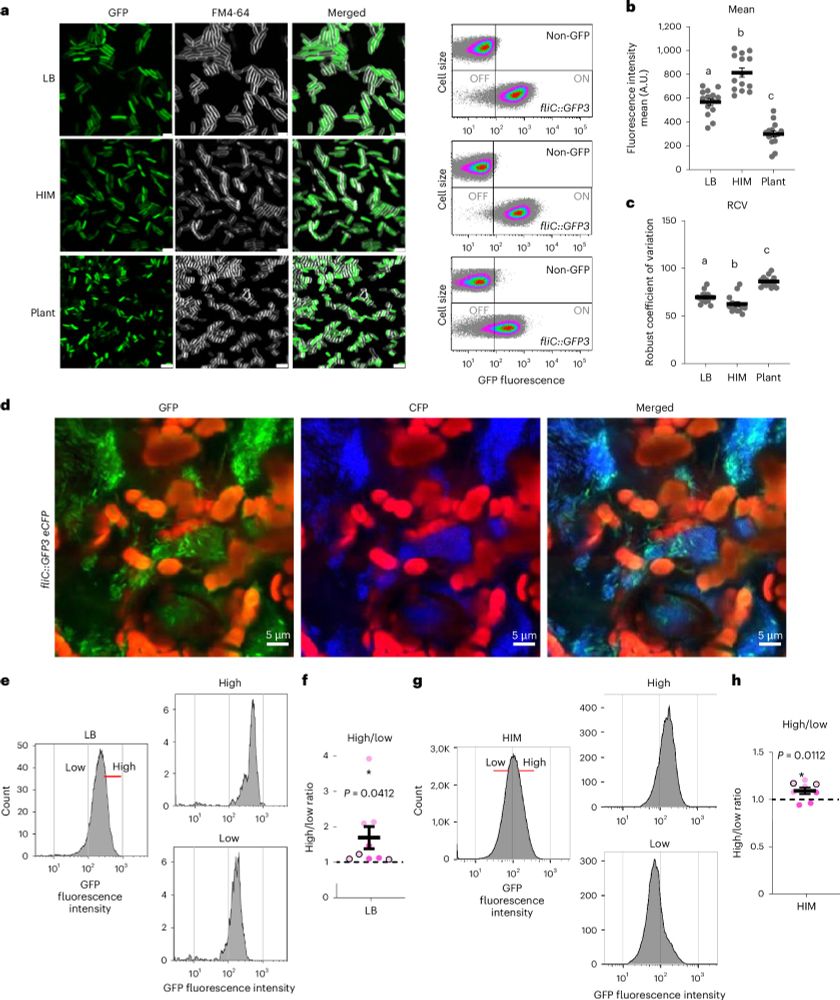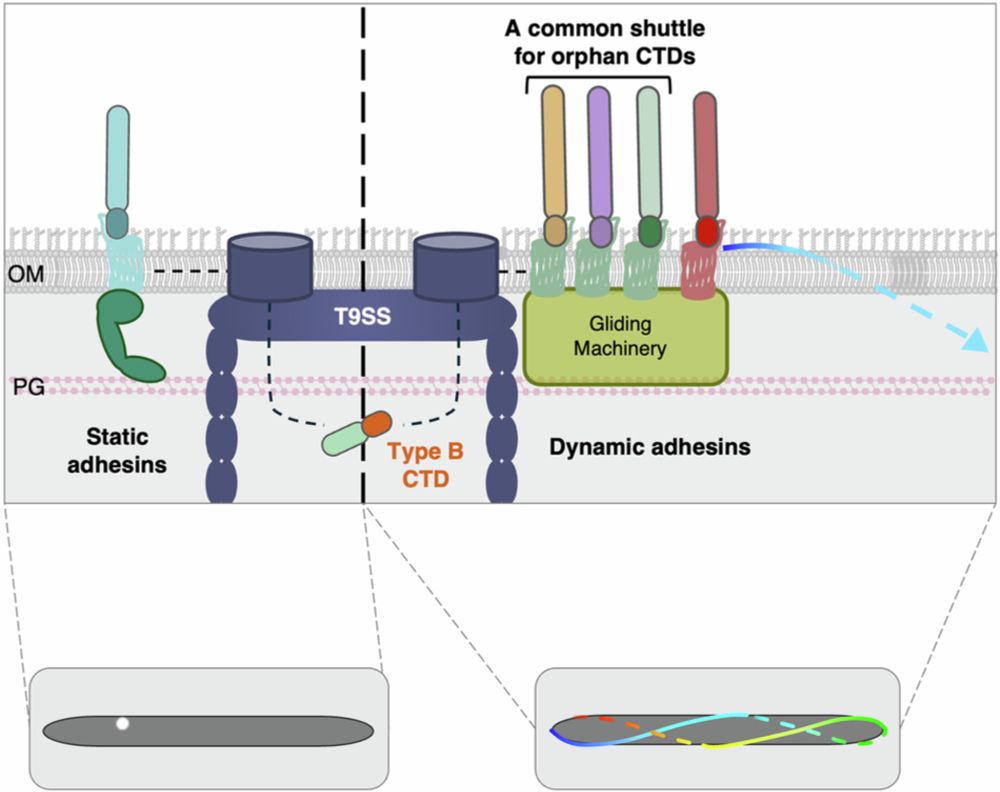
http://www.type3secretionlab.es

#MicroSky #PlantScience #Pseudomonas
Our new research in Nature Microbiology uncovers the sophisticated teamwork of Pseudomonas syringae, a notorious plant pathogen.
🔗 rdcu.be/egczU
We found that in Yersinia, T3SS activation triggers rapid, large-scale reorganisation of chromosomal and plasmid DNA. This links secretion to growth inhibition-revealing a new connection between virulence and bacterial cell biology.
doi.org/10.1016/j.ce...

We found that in Yersinia, T3SS activation triggers rapid, large-scale reorganisation of chromosomal and plasmid DNA. This links secretion to growth inhibition-revealing a new connection between virulence and bacterial cell biology.
doi.org/10.1016/j.ce...
Thanks for putting this together @plaschkalab.bsky.social @rupertfaraway.bsky.social and @thezenklusen.bsky.social

Thanks for putting this together @plaschkalab.bsky.social @rupertfaraway.bsky.social and @thezenklusen.bsky.social
🗓️13-18 September 2026
📍Sant Feliu de Guixols, Spain
📝Program and registration info: meetings.embo.org/event/26-bac...
👩🔬Organised with co-chair @s-lab.bsky.social and ECR @coralietesseur.bsky.social
#MicroSky

🗓️13-18 September 2026
📍Sant Feliu de Guixols, Spain
📝Program and registration info: meetings.embo.org/event/26-bac...
👩🔬Organised with co-chair @s-lab.bsky.social and ECR @coralietesseur.bsky.social
#MicroSky
#PlantScience
Paper here: www.science.org/doi/10.1126/...
Perspective here:
www.science.org/doi/10.1126/...

#PlantScience
Paper here: www.science.org/doi/10.1126/...
Perspective here:
www.science.org/doi/10.1126/...
Our new study in Curr Biol @currentbiology.bsky.social analyzes how CYP707A1 promoter variation drives an evolutionary trade-off between stomatal defense and gas exchange across Brassicaceae species.
Free-access link:
authors.elsevier.com/a/1m7H93QW8S...
Our new study in Curr Biol @currentbiology.bsky.social analyzes how CYP707A1 promoter variation drives an evolutionary trade-off between stomatal defense and gas exchange across Brassicaceae species.
Free-access link:
authors.elsevier.com/a/1m7H93QW8S...
Read the interpretation guidance here: doi.org/10.1099/mic.... #MicrobioJ

Read the interpretation guidance here: doi.org/10.1099/mic.... #MicrobioJ
www.science.org/doi/10.1126/...

www.science.org/doi/10.1126/...
Specialized shuttle proteins recognize
T9SS signals and target
effectors to their final destinations. Great work by @maellepllt.bsky.social, led by @thicoz.bsky.social in collaboration with @audebertstephane.bsky.social
www.nature.com/articles/s42...

Specialized shuttle proteins recognize
T9SS signals and target
effectors to their final destinations. Great work by @maellepllt.bsky.social, led by @thicoz.bsky.social in collaboration with @audebertstephane.bsky.social
www.nature.com/articles/s42...
Metagenomic editing of commensal bacteria in vivo using CRISPR-associated transposases
www.science.org/doi/10.1126/...

Metagenomic editing of commensal bacteria in vivo using CRISPR-associated transposases
www.science.org/doi/10.1126/...
⬇️links in comments
⬇️links in comments
We found that the T3SS core protein SctD in Yersinia dynamically exchanges subunits — and this flexibility is essential for proper assembly & function.
🔗 www.nature.com/articles/s41...
@kit.edu @t3sss.bsky.social

We found that the T3SS core protein SctD in Yersinia dynamically exchanges subunits — and this flexibility is essential for proper assembly & function.
🔗 www.nature.com/articles/s41...
@kit.edu @t3sss.bsky.social
We show how Pseudomonas aeruginosa coordinates its virulence systems, T3SS, H1-T6SS, flagellum, at single-cell resolution.
🔗 www.nature.com/articles/s42...
@t3sss.bsky.social @NaturePortfolio.bsky.social
We show how Pseudomonas aeruginosa coordinates its virulence systems, T3SS, H1-T6SS, flagellum, at single-cell resolution.
🔗 www.nature.com/articles/s42...
@t3sss.bsky.social @NaturePortfolio.bsky.social
• some prioritize motility & T3SS
• others shift to T6SS for antagonism
All tuned by the usual suspect: cyclic di-GMP.

• some prioritize motility & T3SS
• others shift to T6SS for antagonism
All tuned by the usual suspect: cyclic di-GMP.
doi.org/10.1371/jour...
@kit.edu

doi.org/10.1371/jour...
@kit.edu
www.nature.com/articles/s41...

www.nature.com/articles/s41...
GAPDH is often slandered as a 'housekeeping' protein, and its abundance varies significantly across human tissues.
How do you define a 'housekeeping' protein ?

GAPDH is often slandered as a 'housekeeping' protein, and its abundance varies significantly across human tissues.
How do you define a 'housekeeping' protein ?
We are uniting two research powerhouses.
For cutting-edge innovation that will boost our energy security, digital transformation, health and so much more.
Today is a good day for science, and for our EU-Switzerland partnership.

We are uniting two research powerhouses.
For cutting-edge innovation that will boost our energy security, digital transformation, health and so much more.
Today is a good day for science, and for our EU-Switzerland partnership.
More information on our #IHSMLaMayoraPaperDigest ⬇️
www.ihsm.uma-csic.es/comunicacion... that summarises our new article: www.sciencedirect.com/science/arti...

More information on our #IHSMLaMayoraPaperDigest ⬇️
www.ihsm.uma-csic.es/comunicacion... that summarises our new article: www.sciencedirect.com/science/arti...
journals.plos.org/plospathogen...

journals.plos.org/plospathogen...
journals.plos.org/plosgenetics...

journals.plos.org/plosgenetics...



